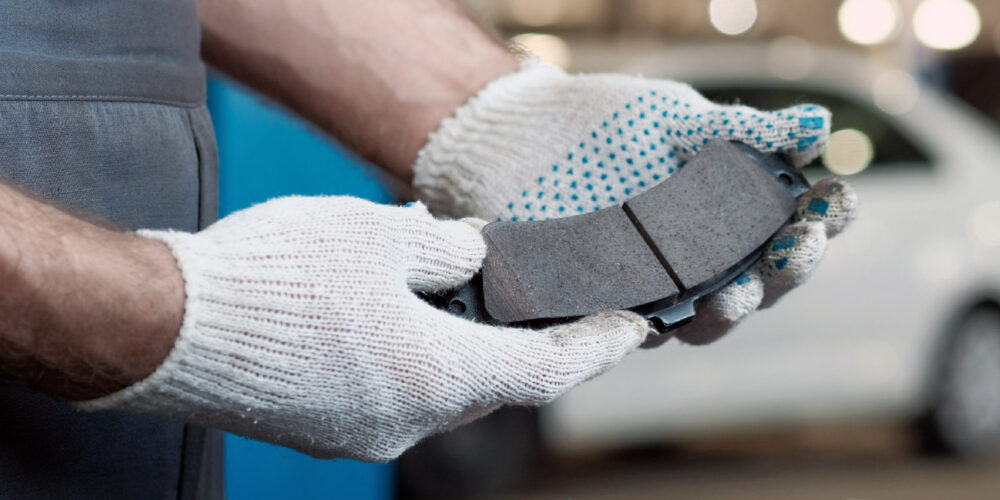 The 2008-2012 Volkswagen Routan is a rebadged variant of the Chrysler mini van platform with revised styling, suspension tuning and brake service procedures. So this van has a bit of a split personality when it comes to servicing the brakes.
The 2008-2012 Volkswagen Routan is a rebadged variant of the Chrysler mini van platform with revised styling, suspension tuning and brake service procedures. So this van has a bit of a split personality when it comes to servicing the brakes.
The customers who drive the Routan and the Chrysler minivan are two different customers judging by the TSBs. The Routan has five different TSBs about addressing customers who complain about brake noise. The Chrysler mini-van has zero. The two vans have almost identical brake systems and assembled in the same plant. So don’t treat the Routan driver like a Chrysler minivan driver.
Brake fluid
Volkswagen requires SAE J1703 or DOT 4 brake fluid for the Routan. This type of brake fluid is recommended because of the kinematic viscosity requirements of ABS and ESC systems.
Brake Booster
 The 3.6 engine equipped Routan uses a vacuum pump to augment normal engine vacuum. Control of the vacuum pump is provided by the PCM. A two-wire electrical connector is used to receive power and ground for the vacuum pump. Operating voltage is between 9V – 16V.
The 3.6 engine equipped Routan uses a vacuum pump to augment normal engine vacuum. Control of the vacuum pump is provided by the PCM. A two-wire electrical connector is used to receive power and ground for the vacuum pump. Operating voltage is between 9V – 16V.
Some vehicles with the auxiliary vacuum pump may store the code DTC P1479 (17887), for a brake vacuum system malfunction. Sometimes this code can be set erroneously due to sudden changes in engine vacuum or even condensation build-up. To check the vacuum pump, it will require the use of a scan tool that can perform the bi-directional test for the pump.
Front Brakes
As stated previously, the Routan driver is more sensitive to brake noise. Always use a premium pad set with new hardware when the pads are replaced.
 The stock front disc brakes are equipped with an audible wear indicator on the left side inboard brake pad only. The right side pads do not include an audible wear indicator. Rear disc brakes are equipped with audible wear indicators on both left side and right side inboard brake pads.
The stock front disc brakes are equipped with an audible wear indicator on the left side inboard brake pad only. The right side pads do not include an audible wear indicator. Rear disc brakes are equipped with audible wear indicators on both left side and right side inboard brake pads.
Rear Brakes
The rear calipers have an integrated parking brake in the caliper. Turning the caliper piston will retract the caliper.
Parking Brake Adjustment
The parking brake lever is an automatic-adjusting type that continuously applies minimal tension to the parking brake cables to keep them in adjustment at all times.
1. Wipe the front parking brake cable strand clean at the intermediate bracket area. Do not use any type of sharp instrument directly on the cable strand to hold it in place. Damage to the cable strand or coating can occur.
2. Clamp an appropriate pair of pliers on the front parking brake cable button only and pull the cable strand rearward until it stops, then grasp the front cable strand and hold it in this position. Remove the pliers from the button.
3. While holding the front cable in this position, install the equalizer (attached to both rear cables) on the front parking brake cable.
4. Release the grasp on the front parking brake cable.
5. Apply and release the parking brake lever one time. This will seat the parking brake cables and allow the auto adjuster in the parking brake lever mechanism to correctly tension the parking brake cables.
Front
Guide Pin: 26ft/lbs.
Caliper Bracket Bolt: 125ft/lbs.
Rear
Guide Pin: 26ft/lbs.
Caliper Bracket Bolt: 100 ft/lbs
Runout Limit
.002”
Bleeding Sequence
Left rear
Right front
Right rear
Left front














